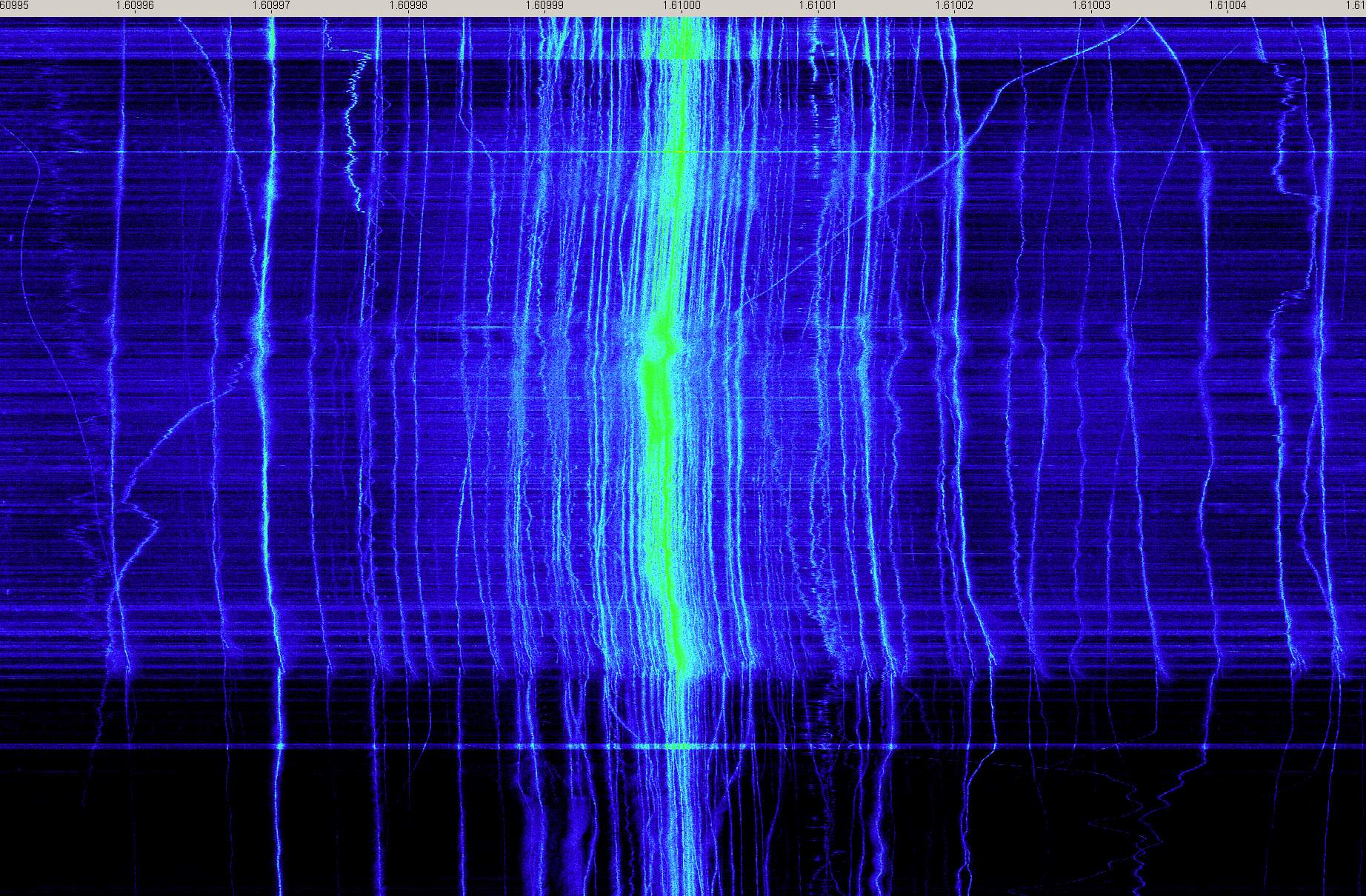Below is a waterfall centered around 1610 kHz in the extended MW (AM) Band, 100 Hz Wide (click on it to see an enlarged image): 
1610 kHz is used by only two broadcast stations, both in Canada: CJWI in Montreal, and CHHA in Toronto. It is also, however, used by many TIS (Travelers Information Stations) stations, which broadcast traffic reports, weather, etc. These are low power stations, typically in the 10 watt range.
Locally, the dominant station on 1610 kHz is a TIS that relays NOAA weather transmissions, and is located somewhere in south central PA. I’ve never heard an ID.
This recording was made between about 2100 and 1700 UTC, you can see the increase in signal (and background) levels overnight, and then the weakening of the signals as the Sun rises and the D Layer reforms, attenuating distant stations. Looking at the waterfall, you can see dozens of carriers, each a different radio station. It’s interesting to note how many radio station signals are present, even during the daytime.
The horizontal lines are due to static bursts, and there’s some changes in the signal level due to the wind blowing around the antenna.
Some of the wandering of carriers you see that is in unison is due to drift of the A/D clock in the SDR. Other drift you see is due to the carriers themselves. Note that each major division at the top of the waterfall is only 10 Hz (and the entire width is 100 Hz) so there’s really only a few Hz total drift. Eventually I’ll get a more stable reference clock for the SDR, and receiver drift should go away.
Let’s have a contest. How many carriers can you count?

This is really cool Chris. What would account for the instability of these carriers. Do they really wander about that much? What is also interesting is that a lot of the carriers seem to wander about in unison. I wonder if that can be attributed to an instability in the VFO in your receiver.
Yes, the common mode drift you see is due to drift in the SDR A/D clock. I updated the article to mention that. You can see some carriers drift on their own, however.
Absolutely. It is amazing seeing this many signals on the one frequency and the variety in which they wander relative to each other. Some are very much locked, others have quite precise periods, others look chaotic or like fluctuations in stock market prices.
Pingback: 4 Million FFT on 1200Khz AM | SDR# (SDRSharp)